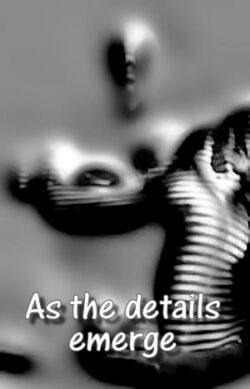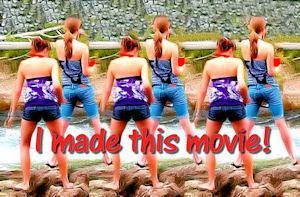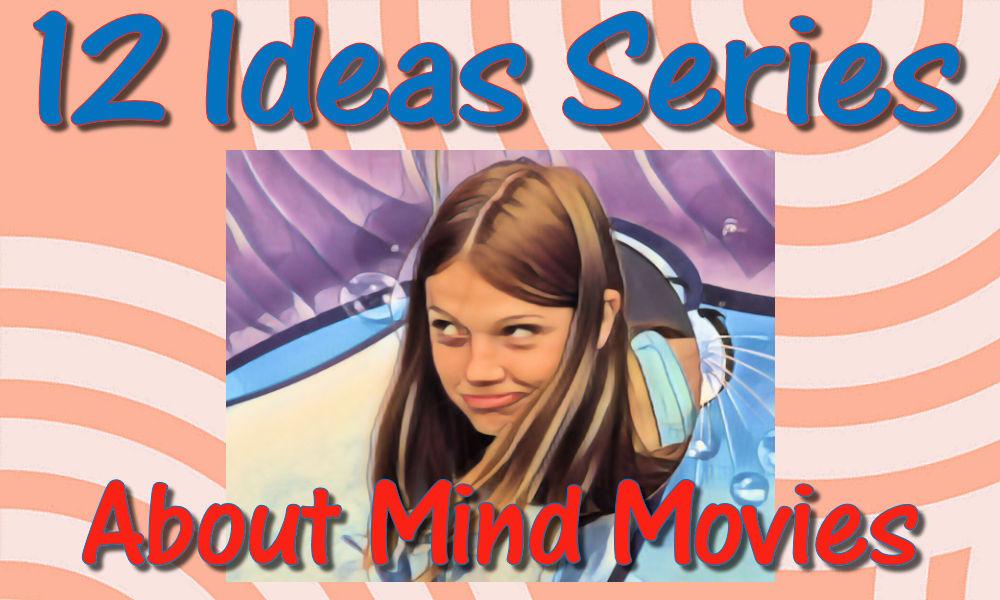- Bring Wisdom — 12 Ideas
- About Anxiety — 12 Ideas
- About Taking Action — 12 Ideas
- About Self Actualizing — 12 Ideas
- About Results — 12 Ideas
- About Mind Movies — 12 Ideas
- About Knowing Yourself — 12 Ideas
- About Being Chained – 12 Ideas Series
- About I‑am-ness — 12 Ideas
- About Happiness – 12 Ideas
- About No Past – 12 Ideas
- About Embodiment — 12 Ideas
About Mind Movies — The stories we create might be interesting (to us) but they are just that… stories. Reality is right in front of us, not in our heads.

Looking for more on this topic?
Check out my book,
Half Asleep in the Buddha Hall.
My “Eastern” book takes you by the hand and helps you to find peace of mind.
Half Asleep in the Buddha Hall is a Zen-based guide to living life fully and deeply.
We have the potential, in dialog, to examine and re-examine both our beliefs and the stories of our life. We can listen to what we tell ourselves, how we describe our situation, and we can begin to understand that, far from being “true,” our stories are simply subjective interpretations of neutral experiences. Once we accept and enact this, we are able to drop the stories, and choose to live in This Endless Moment.
Let me say a word or two about dialog, and then move on to examine the stories we tell ourselves.

It is essential that each person has a couple of people he or she can be in dialog with.
The reason for this is simple. As we’ll talk about in a moment, one of the essential, and yet very hard tasks is to get a handle on how we interpret our situation. And by situation I mean all of the circumstances of our lives, including the drama of our internal theatre.
We all have blind spots.
No matter how far we come along the path to self-understanding and self-actualization, there will always be certain issues that occur that lead to brain freeze.
For example, I’ve spent decades of my life reacting quite negatively to what I perceive as the bad driving habits of others. I yell, I pound the steering wheel, and occasionally wave at the offender with only one finger.
I click over into an instantaneous rage, and I then need to vent. I have no problem venting, and I absolutely believe that getting some of my anger out through steering wheel pounding is likely helpful.
After I calm myself down, I remember that Darbella gets into similar driving situations, and does so without the histrionics.
I decided a while back to discuss my reaction with Dar, (as opposed to defend it,) and to see if I could thwart its “instantaneous-ness.” With a bit of effort, I occasionally succeed.
Our blind spots are a demonstration of an unexplored or off limits mind connection — a fault in our mind movies.

All of our behaviours are designed and initiated in the neural networks of our mind. Everything starts as a trigger, which, through our interpretations, builds into a thought and/or an action.
There is some support for the idea that both memory and brain function are non-localized holograms.
A hologram is a wave-interference pattern that appears to the naked eye as random bits of data. It’s like looking at the grooves on a record, or the mirror side of a CD. The music is right there, but impossible to “see,”
in its stored state. However, given the right playback device, the image is restored.
Not only that, but discrete “bits” of the hologram contain the entire “picture.”
According to Wikipedia,
“Since each point in the hologram contains light from the whole of the original scene, the whole scene can, in principle, be re-constructed from an arbitrarily small part of the hologram. To demonstrate this concept, the hologram can be broken into small pieces and the entire object can still be seen from each small piece. If one envisions the hologram as a “window” on the object, then each small piece of hologram is just a part of the window from which it can still be viewed, even if the rest of the window is blocked off.” [http://en.wikipedia.org/wiki/Hologram]
Holographic memory may operate in the same way. All of the data is there, and is made up of bits of information that are the building blocks of memory. These bits of memory can be extracted, lined up, and formed into anything we choose.
Here’s a metaphor for that.
Image you are a film director, shooting a biopic. You follow “Susie” around, and film her for a month. Let’s even imagine that you film her 24/7 for 30 days.
Clearly, no one wants to see 5040 hours of someone’s life. So, you, as the director, first of all pick a theme. It might be “Susie, exercising,” or “Susie, cooking.”
Or, it might be, “Susie, unhappy.”
Obviously, a lot of “the film of Susie’s life” will be irrelevant to the topic you chose.
Let’s also impose a two hour limit on the finished product. Let’s say Susie was unhappy 100 hours in a month. This must be condensed down to 2 hours.
The director started with a blank screen, and then framed the movie thusly,

What results is a collection of scenes from the “life of Susie,” selected to reinforce the theme of the movie.
Remember, in our limited example, 4940 hours of stuff is eliminated (the non-sad stuff) and then, 98 additional hours of the sad stuff are also dropped — to get us down to two hours.
The end result is a film that runs from the initial framing-point through to the wrap-up. This entire film is designed, and the scenes cherry-picked, to make (confirm) the frame-point. Here’s the premise, and here is the evidence.
This is exactly how our minds construct internal representations (mind movies) of our day-to-day reality.

An idea (“I’m abused!” “I’m helpless!” “Everyone leaves me!” “I’m a failure!”) or judgement occurs to us as an interpretation of an event — something happens to us, typically as powerless kids, and we “spin it” to give it meaning. We then cherry pick scenes from our lives to support the initial premise.
Pretty soon, we have a movie that illustrates what we believe to be so.
However, and this is the problem, this movie is not true. It’s a concoction out of a billion other possible scenarios.
Because we have invested time and effort into crafting the movie(s), however, we develop a blind spot.
The blind spot is this: I am the director, editor, and actor in the fictional film(s) in my head.
I forget this, and assume the film
- a) depicts what actually happened, and
- b) demonstrates that I am a passive victim of “life.”
So, we repeat the initial, invalid mantra, and add on evidence for a belief that causes us misery.
Dialog is one way through the impasse of a stuck and rigid belief.
In therapy, the dialog is simpler, as it is not a reciprocal relationship. The client provides the raw material, the data, by being completely open, and totally honest. The therapist helps the client to see, articulate, and dismantle only the mental dramas that are not functional. (No sense fixing what is not broken”.)
To repeat: The client provides the data through honest and open revelation, and the therapist uses various methods and techniques to challenge “the validity of the client’s movie,” the framing-point, and the usefulness of the story the client is telling.
This work also can be done with one’s principal partner, with a few caveats.
Darbella and I are great believers in honest, open, and vulnerable dialog with one’s principal partner. It’s all about having a partner with a willing pair of ears, and listening to their feedback.
That being said, what is not helpful is for one or the other of couple to act as ‘therapist’ for the other. This degenerates into “I’m here to smarten up and fix my partner” — a game that only leads to misery.
Helpful:
- Discussions regarding the direction of the relationship, about communication, and about “couple related issues” are fair game for dialog.
- Self revelation is always acceptable, and highly encouraged.
- We also establish “word patterns” to remind their partner of “blind spots.”
Discovering Blind Spots
To recap, most people believe that the movies in their heads are true. Thus, when one of these “head movies” runs, they get sucked right in.
It’s analogous to the experience you’ve had in really excellent Hollywood movies. Your “disbelief is suspended” and you are immersed in the action. Time flies by, and you feel emotions arise, and it all seems very real. Then, the movie ends, you give yourself a shake, and reorient yourself to “the real world.”
Now, if a 2‑dimensional celluloid movie can do that to you, imagine what your internal representations can do!
“Tuning in” (being present) to our movies requires noticing our physical reactions. We’re often so wrapped up in the mental movie that we are unable to step back from it. We suggest body awareness — noticing where tightness occurs, where queasiness is felt, where anger arises, etc.
The way out of the mental movie is to notice what your body is doing.
Once you identify where and how you react in your body, you can choose to monitor those parts of your body, and “catch yourself” before you swallow the whole movie.
The goal is to “wake up,” much as you do when a real movie ends… to come back into the theatre, notice the screen, and see the actual people around you (as opposed to the actors you were just “relating to.”)
Then you give yourself a shake, get up, and exit the theatre.
“Waking up” is noticing the physical sensations, and using them to become conscious of the dysfunctional movie that is playing between your ears. Once you notice, you can choose to shift your attention back to the actual experience you are having.
Ultimately, our goal here is to get you to the place of informed observation, and choiceful response.
Informed observation: our head movies are guides. They are meant to be helpful and retrievable” — “Don’t touch the hot stove!” kinds of things. “When I yell and berate and blame my partner, things deteriorate” is a neutral data chunk. Using it to trigger the, “All men are morons, and I’ll show him!” movie is an invitation to disaster.
Choiceful response: we have to notice our addiction to our movies, or we are doomed to continue to react in non-helpful ways. After we notice, we create a choice. This choice is open, flexible and aimed at the result you actually want.
A choiceful response, arising from an informed observation.
It takes both practice and determination to deal with what is going on in the moment, and not to get sidetracked into gathering more evidence of how hard done by you are.
Full and authentic living is living in this moment, without reference to the movies that live in our heads.

